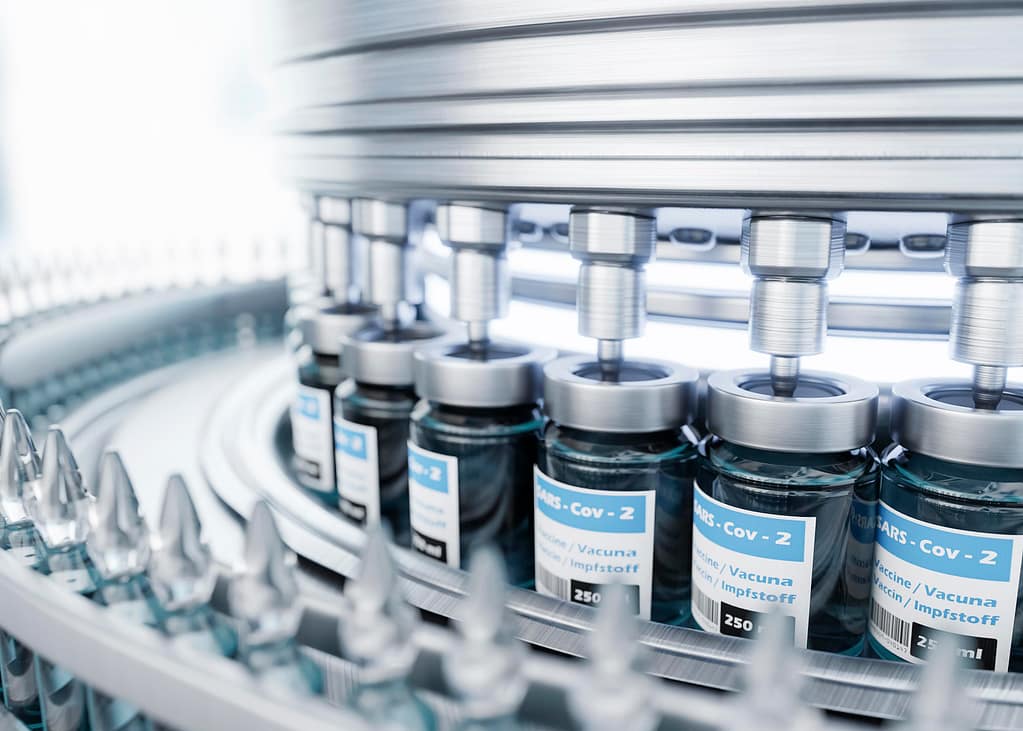With the industry’s growing complexity and regulatory demands, effective environmental monitoring has become more essential than ever. And the environmental monitoring in the pharmaceutical industry couldn’t be different.
In the pharmaceutical industry, it is of pivotal importance to ensure that products are manufactured in conditions that meet stringent quality and safety standards. This practice involves systematically sampling, testing, and analyzing various environmental factors to detect and control potential contaminants that could affect the quality of pharmaceutical products.
Most of the guidelines regarding environmental monitoring in the pharmaceutical industry are regulated by the World Health Organization (WHO). We have another article talking about them here:
In today’s article, however, we want to explore some of the most basic concepts about environmental monitoring in the pharmaceutical industry, so you can understand its importance and impact in the industry. Shall we start?
Environmental monitoring in the pharmaceutical industry: why does it matter?

The primary goal of environmental monitoring in the pharmaceutical industry is to maintain a controlled manufacturing environment. This is critical to prevent contamination that could compromise product safety, efficacy, and purity.
Contaminants such as dust, microbes, and other particles can enter the production process, posing significant risks to the final product and, ultimately, to patient health.
Regulatory agencies like the U.S. Food and Drug Administration (FDA) and the European Medicines Agency (EMA) require pharmaceutical companies to implement robust environmental monitoring programs.
These programs are designed to ensure compliance with Good Manufacturing Practices (GMP) and to protect consumers by maintaining high-quality standards throughout the production process.
Environmental monitoring also helps in identifying potential sources of contamination before they impact the product. By regularly testing the production environment for contaminants, companies can take preventive measures to mitigate risks.
This proactive approach is essential for maintaining product integrity and avoiding costly recalls or production shutdowns.
Furthermore, the data collected from environmental monitoring provides valuable insights into the manufacturing process. This data can be analyzed to identify trends and patterns, allowing for better decision-making and process optimization.
Read also: What is an environmental monitoring plan? A brief guide
Key components of environmental monitoring in the pharmaceutical industry

Air quality monitoring
Ensuring that the air in manufacturing areas is free from contaminants is vital to maintaining product safety and quality. This involves measuring particulate matter and microbial counts to identify any deviations from cleanroom standards.
Instruments like laser particle counters are used to detect airborne particles of varying sizes, and regular sampling and testing for microbial contamination in the air are conducted using methods such as settle plates and active air samplers.
High-efficiency particulate air (HEPA) filters are critical in removing airborne contaminants, capturing particles as small as 0.3 microns with an efficiency of 99.97%. Additionally, laminar airflow systems and cleanroom design ensure that air moves in a way that minimizes contamination, with air change rates maintained at specific levels to dilute and remove contaminants.
Surface monitoring
Surface monitoring involves the regular sampling of various surfaces within the manufacturing environment to detect and prevent microbial contamination. Surface swabs and contact plates are used to collect samples from walls, floors, equipment, and workbenches.
Regular and systematic sampling schedules are established based on risk assessments and regulatory requirements. The collected samples are analyzed in a laboratory to detect and quantify microbial presence, helping to identify contamination sources and trends.
Personnel monitoring
Human operators can be a significant source of contamination in pharmaceutical manufacturing environments. Effective personnel monitoring includes strict gowning protocols to ensure that operators wear appropriate protective clothing to minimize contamination risk.
Regular assessments of gowning practices are conducted. Routine testing of gloves worn by personnel is performed to check for microbial contamination, using methods like the finger dab technique or glove juice sampling.
Regular monitoring of personnel hygiene practices, such as handwashing effectiveness, helps to maintain cleanroom standards. Training programs and periodic audits support compliance.
Water quality monitoring
Water used in pharmaceutical manufacturing must meet high purity standards to avoid introducing contaminants into the production process. Regular testing for microbial contamination in water systems is essential, using methods such as membrane filtration and total organic carbon (TOC) analysis.
Testing for chemical contaminants, such as residual disinfectants and endotoxins, ensures water quality, with high-performance liquid chromatography (HPLC) and other analytical techniques used. Monitoring for particulate matter in water helps to ensure that filtration systems are effective and that water purity is maintained.
Temperature and humidity control
Maintaining optimal temperature and humidity levels is crucial for preventing microbial growth and ensuring product stability. Advanced sensors and data loggers continuously monitor temperature and humidity levels within manufacturing and storage areas.
Automated control systems adjust heating, ventilation, and air conditioning (HVAC) parameters to maintain the desired environmental conditions. Regular calibration of monitoring equipment ensures accuracy and compliance with regulatory standards, with data from these systems reviewed and documented to demonstrate control and compliance.

Technologies and methods
Advancements in technology have significantly enhanced environmental monitoring capabilities. Some of the cutting-edge methods and tools used in the pharmaceutical industry include:
- Real-time monitoring systems: These systems provide continuous data on environmental conditions, allowing for immediate detection and response to potential contamination events.
- Automated sampling devices: Automated systems for air and surface sampling reduce human error and increase the accuracy and consistency of environmental monitoring.
- Microbial identification systems: Rapid microbial identification systems, such as MALDI-TOF mass spectrometry, allow for quick and accurate identification of contaminants, enabling faster corrective actions.
- Data analytics and software: Advanced software tools analyze environmental monitoring data, identify trends, and predict potential risks. This proactive approach helps in preventing contamination before it occurs.
- Wireless sensor networks: Wireless sensors placed strategically throughout the facility can monitor various environmental parameters like temperature, humidity, and particulate levels, providing a comprehensive overview of the environment in real time.
- Remote monitoring and cloud integration: Cloud-based platforms enable remote monitoring and data access, allowing for centralized data management and real-time collaboration across multiple locations.
- Predictive maintenance tools: Using machine learning algorithms and historical data, predictive maintenance tools can forecast equipment failures or maintenance needs, reducing downtime and preventing contamination risks.
- Advanced filtration and air purification systems: Innovative filtration technologies and air purification systems help maintain cleanroom standards and reduce the presence of airborne contaminants.
- Automated cleaning and disinfection systems: Robotics and automated systems for cleaning and disinfection ensure thorough and consistent sanitation, reducing the risk of human error and improving overall hygiene standards.
- Environmental genomics: The use of genomic techniques to analyze environmental samples can provide detailed insights into the microbial communities present, helping to identify and mitigate potential contamination sources more effectively.
Read also: IoT connectivity: key components and advantages
The future of environmental monitoring in the pharmaceutical industry
Environmental monitoring is a fundamental component of quality assurance in the pharmaceutical industry. By systematically controlling and monitoring environmental factors, pharmaceutical companies can safeguard product quality, ensure regulatory compliance, and protect patient health.
As the industry continues to evolve, ongoing advancements in technology and best practices will further enhance the effectiveness of environmental monitoring programs, ensuring that the highest standards of safety and quality are maintained.
To do that, you need the best environmental monitoring solutions and devices the market has to offer, and that’s exactly what we do here at Datanet IoT.
We work with a complete array of tools to ensure environmental tracking is as effective as it can be across many areas – including the pharmaceutical industry. Get in contact today to learn more about our products and services!






